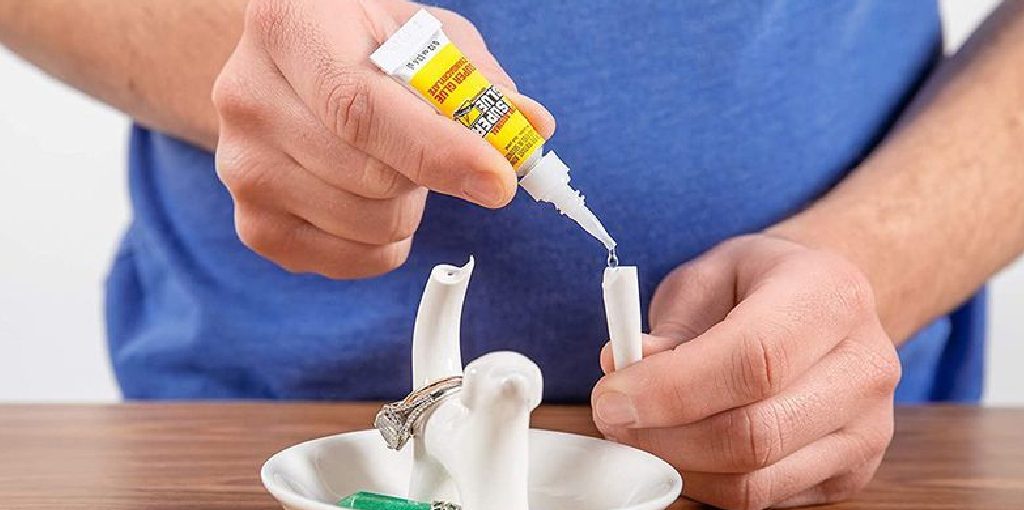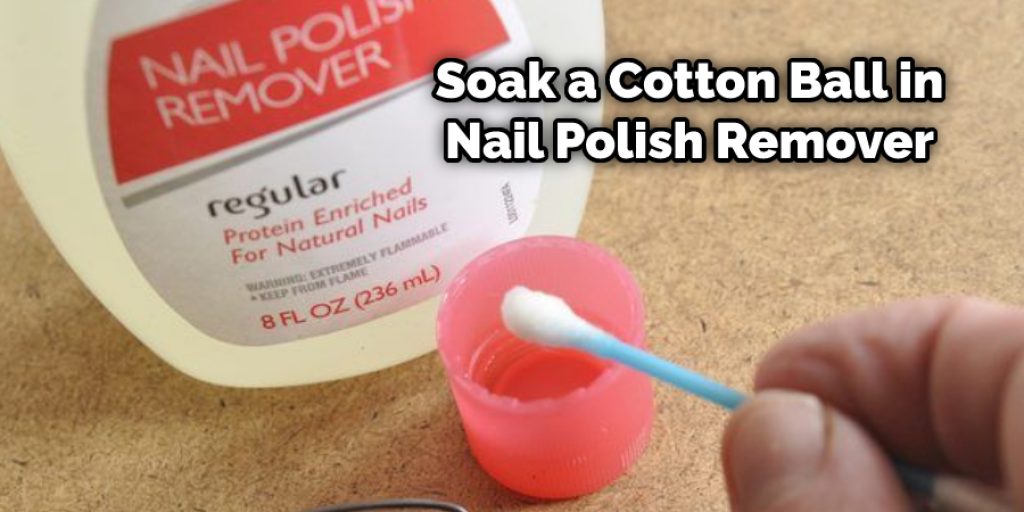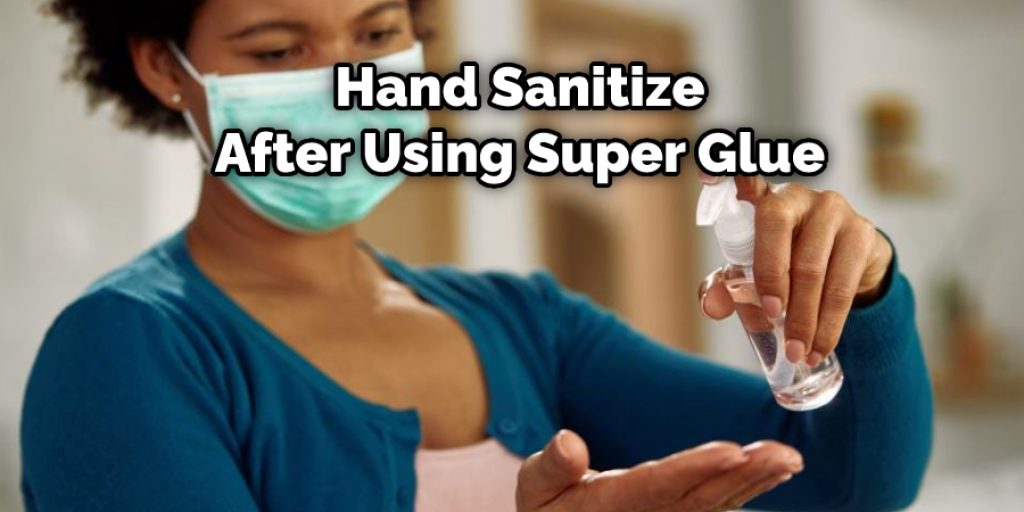How to Remove Super Glue From Plastic and Metal
Super glue is a powerful adhesive that can repair many things, but when it gets on materials other than wood or fabric, like plastic and metal, you need an expert. Super Glue is tough stuff to remove from all surfaces because it will adhere to any surface in contact with the glue; However, there are ways on how to remove super glue from plastic and metal.

One way is by using acetone nail polish remover, which will dissolve the bonds between the superglue and the material. Another way would be scraping off as much excess as possible and then using boiling water (212 degrees Fahrenheit) to soften up the remaining traces of super glue so they can be scraped away easily. Read on to know more information!
10 Ways on How to Remove Super Glue From Plastic and Metal:
1. By Hand:
Soak the superglue-covered part in warm acetone or nail polish remover, which contains acetone. This loosens the bond and allows you to pull apart the pieces without damaging them. Repeat as necessary.
2. With Petroleum Jelly:
Rub petroleum jelly, such as Vaseline, on the superglue-covered plastic or metal surface. Let it sit for a few minutes, and then remove the jelly and wipe the glue residue with a clean cloth. Rubbing the surface with a clean cloth will prevent you from smearing the petroleum jelly over other parts.
3. With Glue Remover:
Apply a chemical-resistant glue remover, such as Goof Off, to the superglue-covered plastic or metal surface. Let it soak in for several minutes, and then wipe away the residue with a clean cloth. The glue remover will not damage the plastic and should loosen the bond between it and the superglue.
4. With Nail Polish:
Soak a cotton ball in nail polish remover containing acetone, such as pure acetone or “acetone free” nail polish remover (which may still contain trace amounts of acetone). Press the cotton ball to the superglue-covered part and hold it for a few minutes.

Wipe away the residue with a clean cloth, which will prevent you from smearing the nail polish remover over other parts. You can also use acetone-containing liquid soap or vegetable oil instead of nail polish remover if you don’t have any on Hand.
5. With WD-40:
Spray a liberal amount of WD-40 onto the superglue-covered plastic or metal surface and let it sit for a few minutes. Then, wipe away the residue with a clean cloth, which will prevent you from smearing the petroleum distillates from the WD-40 over other parts of the surface.
6. With White Toothpaste:
Squeeze a small amount of white toothpaste onto a plastic shopping bag and rub it into the superglue-covered plastic or metal surface with another plastic bag. Once you have rubbed all toothpaste off, you can wash and dry the surface like normal.
7. With a Razor Blade:
Gently scrape away the superglue-covered parts with a sharp razor blade or hobby knife. Wipe off any residue immediately with a clean cloth to prevent scratches on the plastic or metal surface because it can dull finishes and damage the paint on your car if you are working on it.
8. With Baking Soda Paste:
Create a baking soda paste by mixing baking soda with just enough water to create a thick paste. Apply the paste to the superglue-covered plastic or metal surface and let it sit for several minutes. Then, wipe away the residue with a clean cloth, which will prevent you from smearing the messy mixture over other parts of the surface.
9. With a Magic Eraser:
Dampen a magic eraser with water and rub it over the superglue-covered plastic or metal surface. Then, wipe away the residue with a clean cloth, which will prevent you from smearing the slightly abrasive mixture of melamine foam and oxides of calcium and sodium over other parts of the surface.
10. With Hand Sanitizer:
Soak a cotton ball in hand sanitizer containing ethyl alcohol (ethanol), and rub it over the superglue-covered plastic or metal surface. Wipe away the residue with a clean cloth. Ethyl alcohol is highly flammable, so avoid getting it on any hot surfaces or near open flames.

Some Tips and Suggestions:
- The best way to remove super glue, and especially an excess of it, is to keep a jar of acetone around the house along with some q-tips and, if available, cotton pads.
- Get rid of any extra residue by using warm soapy water or rubbing alcohol on a cotton ball or soft cloth. This is very effective around kitchen and bathroom areas where most people use these products.
- Use a razor blade to scrape excess glue off smooth surfaces such as glass or mirrors if you can’t get it all off with the above steps. This is strictly for the most stubborn of cases but works surprisingly well in some situations.
- Do not let super glue dry completely before you attempt to remove it, as it becomes exponentially harder to remove as time goes on.
- In a pinch, you can use an oil such as WD-40 or even cooking spray as long as the surface is not painted, shiny, glossy, or transparent for apparent reasons.
- Try removing the excess super glue with a cotton swab moistened in nail polish remover.
- Use a green scrub pad to remove dried glue from textured surfaces gently.
- Use heat and an ice cube wrapped in a cotton ball or cloth as the last resort for removing super glue residue on plastic or metal. However, this will damage whatever the surface is if it melts the material it is on.
Conclusion:
If you can’t remove super glue from your metal or plastic, the best solution is acetone. However, be careful not to touch it with your fingers as this may cause burns. You should also avoid getting any liquid on other surface parts that its chemical properties will damage.
The next time you need to remove sticky substances like glue and paint from surfaces in your house, remember these easy steps for how to remove super glue from plastic and metal without damaging either the surface or yourself! We hope that this article has helped show how to get rid of the irritating substance without too much trouble! Stay tuned for more posts on uses of DIY household items like Super Glue!




